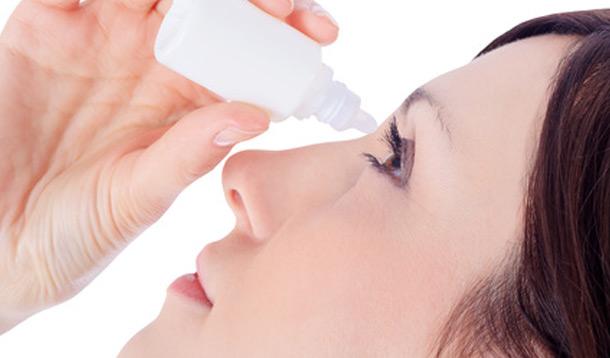
As I write this article, I have to pause and put eye drops in my left eye because — in a display of strange coincidence — I happen to be dealing with my own case of conjunctivitis as we speak. The infection was gleaned from my snuggly 5 year-old’s pillow as I lay down with him the other night when he first came down with his most recent virus. It’s ironic, perhaps. But it’s also just life.
When something unexpected happens involving your eyes, or your kids’ eyes — like an injury or an infection — it can be alarming. But, as with most things, it’s important to not panic. And it’s better to know what to do before these things happen, so you’re ready. Here’s what you need to know:
Having an injury that involves your eyes, or the eyes of your children, is a nightmare for many, but it’s not uncommon. Over 720,000 Canadians have a medical eye injury each year, and nearly half of those injuries occur in the home. The most likely injury you’ll face? A corneal abrasion.
![]() All about corneal abrasions
All about corneal abrasions
The cornea is a clear tissue that covers your iris, think of it as the window to your eye. A corneal abrasion is what happens when something scratches your cornea—like a fingernail, a branch, or a tiny piece of plastic...or any object that might get stuck under your eyelid.
A corneal abrasion feels like this:
![]() What should you do if you think you have a corneal abrasion?
What should you do if you think you have a corneal abrasion?
If you think there’s something in your eye, do not rub or press on it. Blink several times or try to gently remove it but be careful. If that doesn’t work, rinse your eyes once or twice with water, or use an eye washing station if you have access to one.
If none of those things work, that’s when you seek medical attention. You have options — your family doctor, or a nurse, or one option you may not have considered: a Doctor of Optometry. We usually think of Doctors of Optometry only when it comes to routine exams and corrective lenses, but they are an excellent choice when you have an urgent eye issue, too. They have the training, expertise and specialized equipment to quickly diagnose and treat most corneal abrasions. A Doctor of Optometry can usually see you in the same day if the matter is deemed urgent, and you don’t need a referral.
For whatever reason, whenever people hear the word “pink eye,” they break into a sweat. But it’s definitely not a cause for alarm. Daycares and schools take a hard line against pink eye...if you have a kid in preschool, you’ve perhaps encountered pink eye at some point. So what’s the deal with pink eye? Here’s what you need to know.
![]() What is pink eye?
What is pink eye?
The medical term for pink eye is conjunctivitis, and it’s an umbrella term for any infection or irritation of the eye. Conjunctivitis can be caused by bacteria, viruses, allergies, or other conditions. These are the symptoms you need to look for:
![]() Is pink eye contagious? How is it treated?
Is pink eye contagious? How is it treated?
If the conjuctivitis is caused by an infection (as opposed to an allergy) it can spread quite easily. This is why daycares, pre-schools, and schools tend to jump on the first sign of pink eye. People usually get conjunctivitis by touching something that has touched an infected person’s eye—like a towel or a pillowcase (ahem, as in my case), or their hands.
Treatment depends on the cause, which is why it’s important to get checked out. A Doctor of Optometry is an expert in this department, and an excellent place to go to get you (or your kid’s) conjunctivitis diagnosed and properly treated.
If it’s a case of viral conjunctivitis, antibiotics won’t help. Pink eye caused by a virus will resolve in a few days on its own. If it’s bacterial conjunctivitis, an antibiotic eye drop or gel will be prescribed. And allergic conjunctivitis requires a different kind of eye drops, or other allergy medicine.
Not everything can be prevented, of course, but certain steps can make it less likely that you or your kids will suffer an eye problem. Here's how to prevent urgent eye issues such as corneal abrasions and pink eye:
And one final note: be sure to see your Doctor of Optometry for regular eye exams (the first exam should be between six and nine months of age, once a year for children and every two years for most adults). It’s good preventive care, and it also ensures you have a trusted eye care expert available to you when you need them.

This post is brought to you by Doctors of Optometry Canada.
www.doctorsofoptometry.ca
Connect with the Doctors of Optometry Canada on Facebook: https://www.facebook.com/AskaDoctorofOptometry